Inside: Wanting to learn to play a musical instrument is not the same as sticking to years of dedicated practice. Here is a list of picture books about musicians and musical instruments that will inspire love and appreciation of music. They also might help your kids to keep going when the going gets tough.
Over the years, we have tried many different ways to study music: group classes, private classes, large and small music schools, tutors in our home, music learning apps, and shared private tutors. No matter what the arrangement is and the amount of initial excitement, there comes a moment when kids just aren’t sure if it’s worth all the trouble.
I find that the best way to get over the hump is to put aside the musical instruments (or step away from the piano) and read some books together (a trip to a good concert might work, too).
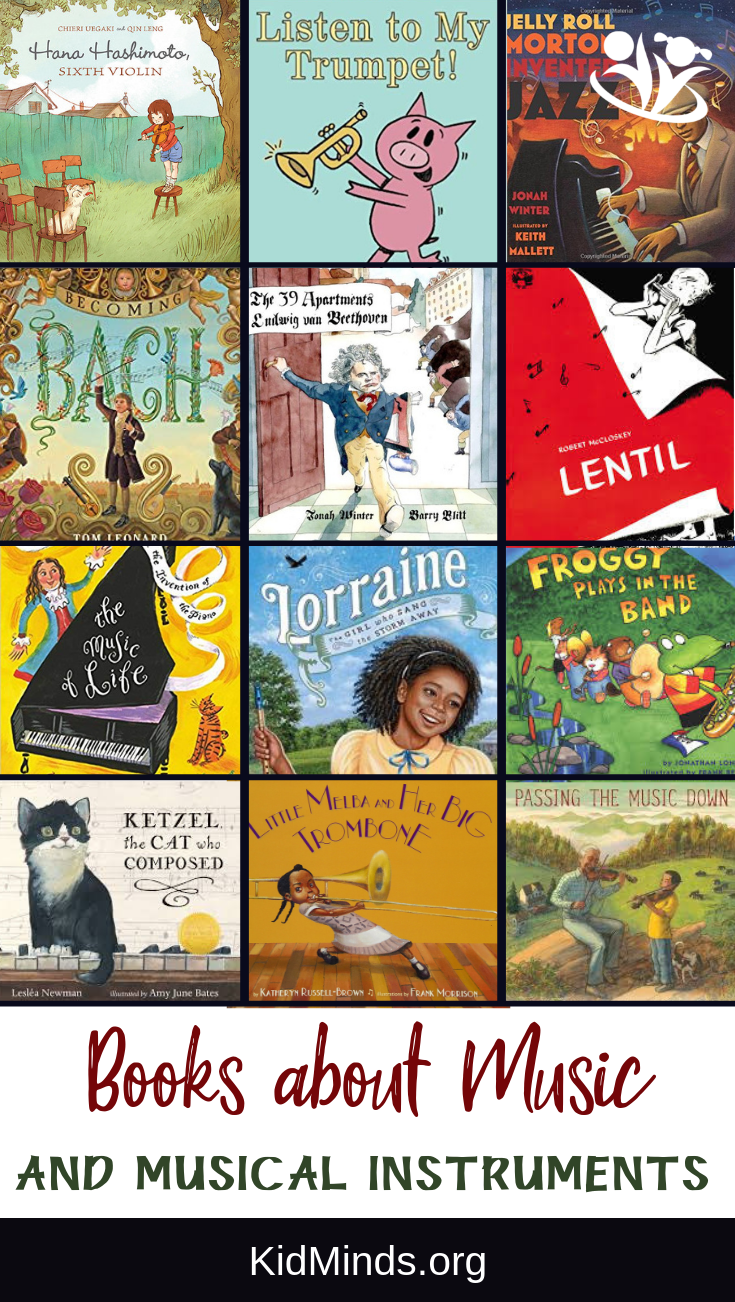
I have curated a list of my favorite children’s books about music, musicians, and different instruments that might encourage your kids to stick with their practice. I made an effort to include a wide range of musical instruments. Some of these stories are based on historical figures, and others are fictional, but what they all have in common is that they have the potential to inspire your kids to keep playing after the initial excitement wears out.
Disclaimer: This post contains Amazon affiliate links. If you make a purchase through my link, I might get a commission. Thank you for supporting Kid Minds!
Books for Kids Who Are Learning to Play a Musical Instrument

The 39 Apartments of Ludwig van Beethoven, Jonah Winter
This one is one of our favorites. In this vibrant story, the author sets out to investigate why Beethoven lived in 39 different apartments in and around Vienna. Historians still don’t know for certain why Beethoven moved so much and just how he managed to move five pianos in and out of the tiny doorways, attic studios, and basement flats. But Jonah Winter has come up with a very creative take on the whole affair.
Despite the hilarity and humor, this book is an examination of human suffering. Can you imagine how it must have felt to be the best composer in the world and to know that you were going deaf? This is the kind of book that makes my kids realize it’s actually a privilege to sit down at the piano and play. The first thing my daughter does after reading this book is to make a beeline for the piano to play some Beethoven pieces.
Related: If your town doesn’t have an amazing piano teacher who allows your child to explore his or her musical talent while enjoying the process, you might be interested in trying online resources. Here is a list of the best online piano lessons for kids.
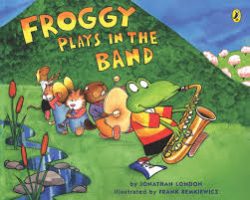
Froggy Plays in the Band, Jonathan London
Why is Froggy in the attic dusting off his dad’s old saxophone? Because his music teacher announced a marching band competition, and yes, Froggy wants to win a prize. Screeeech, goes Froggy. Sadly, he’s not a very good sax player, but he keeps trying. And we know Froggy will end up doing something great. The musical journey is not a linear process; sometimes, you just have to put one foot in front of another and keep your eyes on the prize. By the way, I believe that keeping music practice logs helps kids focus, especially during the awkward beginner phase.
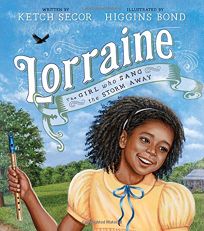
Lorraine: the Girl Who Sang the Storm Away, Ketch Secor
This beautifully illustrated Appalachian folktale wraps love, a raging tempest, and a whole lot of singing into an elegant tale with a surprise ending. Written by a Grammy Award-winning musician, Ketch Secor, in a lively rhyme, this book can even be sung instead of read. See for yourself: “One drizzly night as the whole farm lay sleeping, a frightening sound started rolling and creeping. While rain lightly pattered, the wind began lashing and a Tennessee tempest came crashing and bashing.” The message of the book is clear—music has the power to lift human spirits and help us get over a rough patch.
Are you looking for uplifting songs about kindness for kids? Check out this fantastic collection from The Educator’s Spin On It.
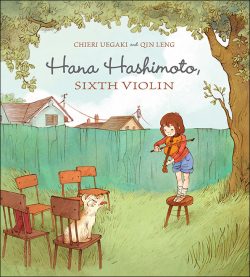
Hana Hashimoto, Sixth Violin, Chieri Uegaki
Hana’s grandpa can pluck the strings of a violin to mimic the sound of raindrops, make his violin chirp like crickets, and compose melodies that can make fireflies glow brighter. Hana gets so excited about learning to play the violin that after only three lessons, she signs up for a talent show. Her brothers think she will be a disaster, but she surprises them. It’s a beautifully written and gorgeously illustrated picture book about the value of practice, dedication, and commitment.
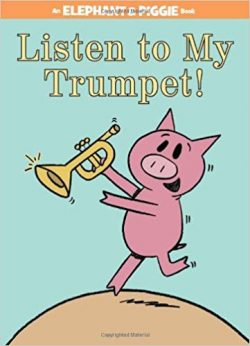
Listen to My Trumpet, Mo Willems
The elephant doesn’t know how to tell Piggy without hurting his feelings that he is not playing the trumpet very well. When he works up the courage to be honest, Piggy is incredulous: “Do you think I’m trying to play trumpet? I’m trying to talk Elephant!” The final page where Elephant is instructing Piggy to put more “ick” into his “gr-ick” when playing trumpet has us in stitches no matter how many times we read it.
It’s Mo Willems, so you know it’s hilarious, enjoyable, and re-readable. And if your kids will pick up their trumpet after reading this book, it will only attest to the power of it to inspire kids.

The Blues of Flats Brown, Walter Dean Myers
This is a great book to introduce your kids to blues and to inspire your kids to learn to play guitar. Flats is an extremely likable dog who plays blues. All he has in the world is a guitar and an old friend, Caleb. No matter what sad things happen in his life, he tries to hold on to these two things—his guitar and his friend. Soulful pastel illustrations add to a melancholy mood. The moral of the story is that all people need somebody to show them a little love. It also shows that music helps people feel better when they feel blue.

Home on the Range: John A. Lomax and His Cowboy Songs, Deborah Hopkinson
“Sometimes, one of the hardest things in life is to find the right path.” When John A. Lomax was a little boy, he liked to sing and to listen to mournful cowboy songs, but cruel words from a snooty professor in college almost made him stray from the path that was right for him. Almost.
One day, he set out across America to collect folk songs that hadn’t been heard before, and— thanks to him—are now still used today. Home on the Range, one of the songs he discovered, even became the state song of Kansas.
Your kids might be interested to know that John Lomax was a pioneer in oral history and music folklore. It’s now possible to get an official degree in Music History and even in (still rarer) Oral History from many universities across the world.

Becoming Bach, Tom Leonard
Bach lived over three hundred years ago. His mother died when he was nine years old. When his father died the following year, Bach had to walk over thirty miles in a storm to his older brother’s home. (It was before you could pick up a phone and say, “Hey, dear brother, come pick me up.”)
Bach was pretty determined to become a musician, so by day he soaked in the musical instructions from whatever family members had time for it (all the Bachs were eager musicians). And by night, he sat by candlelight and furtively copied pages of music scores. (He had to do it in secret because the paper was expensive). Well, you know how it turned out for him. Bach became one of the most famous composers and musicians who ever lived. The moral of the story: if you’re determined to play music, there’s no stopping you.

Passing the Music Down, Sarah Sullivan
Can you imagine wanting to learn fiddle music so much that you sell your home and move to another state? That’s what happened in this true story. When a young boy from Indiana dreams of learning from the best fiddle player in the country, his mom finds a way to move the family to West Virginia to live close to this talented fiddler. The boy trained with the old man and, after his teacher’s death, continued to teach tunes to the next generation of fiddle lovers that he learned from his teacher.
This book is about the passion for music, passing the music tradition down to later generations, and the power of the parents’ love for their child. After you read it, listen to the fiddle tunes mentioned in the book.

How Jelly Roll Morton Invented Jazz, Jonah Winter
After reading this book, your kids might find new reasons to love their lessons. They will also learn a few things about jazz. Jelly Roll Morton didn’t really invent jazz—though it does make for a catchy book title—but he was a very enthusiastic early jazz player and composer. When he was a teenager, his parents kicked him out of their home, and he made a living playing piano. All of his life, he used music as a way to drown his inner pain. “If you’d been Jelly Roll Morton, you would’ve known that the only way to rise up and fly away was one piano note at a time.” We love the beautiful illustrations and catchy rhymes.

Ketzel, the Cat Who Composed, Leslea Newman
My kids get a huge kick out of this wonderful true story. In it, we learn about a talented composer who has a gift for turning the sounds he hears into beautiful music. But one day, he has writer’s block (or rather composer’s block) on the eve of a music competition. As he grows more and more despondent, his cat jumps onto the piano and walks across it. He wrote the notes just as he heard them and sent them to competition under his cat’s name. And the cat won!
It’s a true story. You can listen to the composition on YouTube. Type in “piece for piano: four paws.” FYI: the monetary reward from the competition was used to buy cat food. The story is very well presented and magnificently illustrated.

Just a Lucky So and So: The Story of Louis Armstrong, Lesa Cline-Ransome
This is another story about the power of music to make life better. When Louis Armstrong was eleven, he got in trouble with the law and was sent to a juvenile home. “Me and music got married at the home,” said Armstrong. It’s a simple but inspiring story about hard work, perseverance, and finding success as a musician. The book is easy to read, provides lots of information, and has beautiful watercolor artwork.

The Music of Life: Bartolomeo Cristofori & the Invention of the Piano, Elizabeth Rusch
The book starts in such a boring way that it took us a few tries to get past the first few pages, but once we did we really enjoyed it. All my kids (except the toddler) take piano lessons, and it was interesting for them to learn how the modern piano was invented, where its name comes from, and what Bartolomeo had to do with it. There are lots of additional resources at the end of the book, from the timeline of Bartolomeo’s life (three pianos that he built in the 1720s still survive today!) to how the author reconstructed history for this book.
We followed the author’s suggestion and listened to all the classical and modern piano pieces listed in the book, from Ludwig van Beethoven’s Symphony No.9 to Elton John’s Crocodile Rock. I wouldn’t recommend reading this book for any artistic enjoyment, but it has lots of valuable information. It may be best suitable for kids 10+.

Little Melba and Her Big Trombone, Katheryn Russell-Brown
We still haven’t talked about trombone players, have we?! Melba Doretta Liston always loved music, and when she was seven, she begged her mom to buy her a shiny trombone. The problem was that her arm was too short to push out the slide, and when she blew, it sounded like a howling dog. But she kept at it and became quite skillful in turning hurt feelings into soulful music. By the time she was seventeen, she was invited to tour the country with a band! Besides learning about Melba’s successful music career, you’ll also discover her experience with discrimination, racism, and loneliness.

Lentil, Robert McCloskey
Lentil can’t sign or whistle, but he is determined to make music. So, he saved up enough pennies to buy himself a harmonica and decided to become an expert. He practiced every chance he got, and when the cornetist, piccolo player, trombone player, and tuba player in the city’s band got a funny case of puckered-up lips, Lentil saved the day. “So you never can tell what will happen when you learn to play the harmonica.” The drawings are absolutely fantastic!
Do you have favorite children’s books for young musicians?


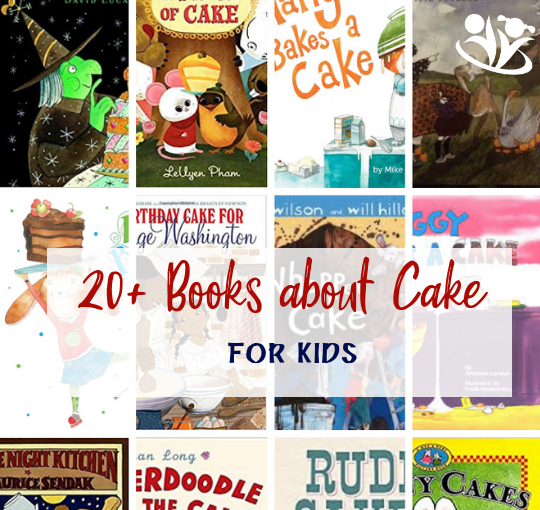

[…] Music books […]